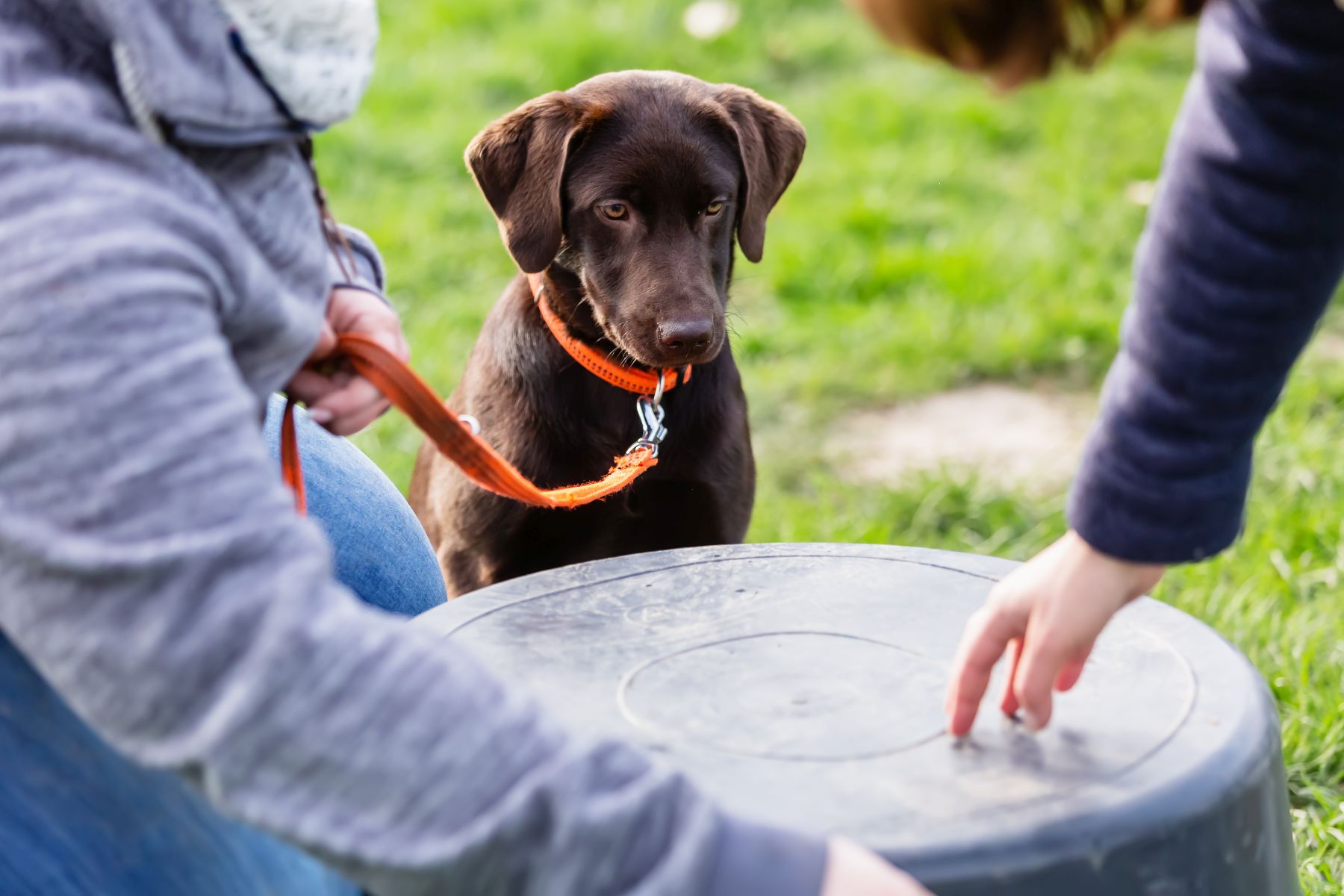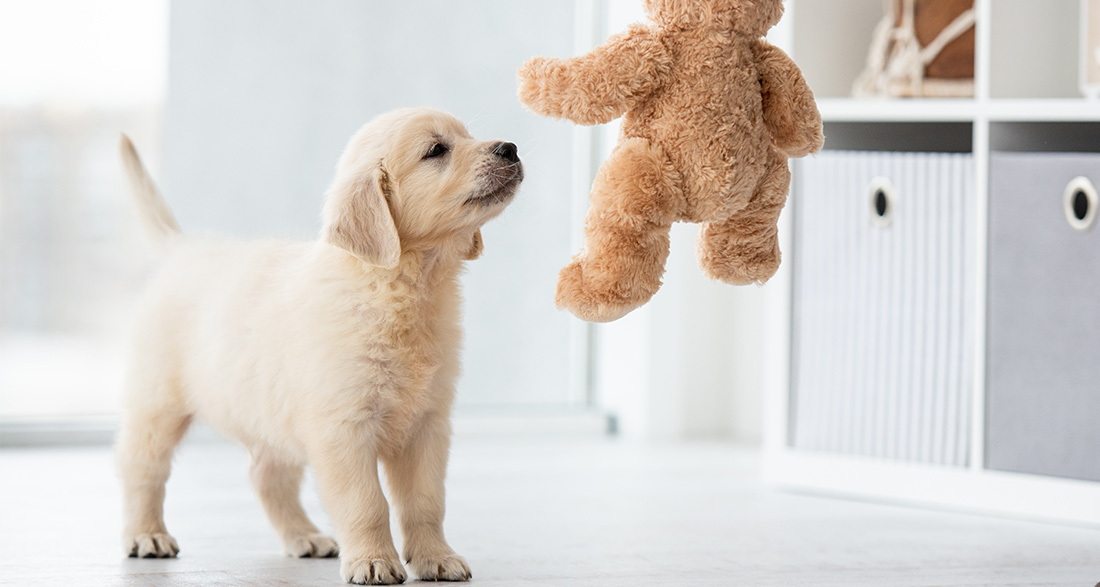Every puppy goes through numerous developmental stages until it matures into an adult dog. Understanding what is crucial for the development of a confident and relaxed dog is essential, as highlighted in the iHugDogs magazine.
Below, we aim to familiarize you with the various developmental phases. In some parts of these phases, the mother dog and the breeder play a crucial role. However, once your puppy joins your home, you are responsible for helping it on its journey.
First and Second Week

The Neonatal/Vegetative Phase:
This phase begins with the birth of the puppies and covers the first two weeks of life. Puppies are born blind and deaf, with hunger and cold being their primary sensations.
Most of the time, the little ones sleep or seek contact with the mother to feed and stay warm. In their quest for nourishment, they exhibit a searching behavior, moving their heads back and forth in circular motions. This helps them stay close to the nest.
Learning begins during this time. When hungry or cold, the puppies actively do something about it and are rewarded with success, whether in terms of feeding or physical contact. This experience should not be overly interfered with by humans; mild stress promotes emotional stability.
During this phase of development, puppies should be protected but not over-nurtured.
Third Week
The Transition Phase in Puppy Development:
The third week of a puppy’s life is referred to as the transition phase. During this time, their eyes and ear canals open, and deciduous teeth start to emerge. However, vision typically starts around the 17th or 18th day. The increase in sensory input leads to puppies beginning to react to siblings, humans, and the environment.
Activity levels rise, even though they still sleep a lot. Increased movement, such as crawling backward, contributes to muscle development, enhancing coordination.
This phase of puppy development also marks the initiation of early socialization, where the puppies start interacting with their littermates. Regular petting across their bodies by the breeder helps acclimate them to humans and fosters focus.
Fourth to Twelfth Week
The Socialization Phase:
The socialization phase is the most crucial developmental stage in a young dog’s life, lasting from the fourth to the sixteenth week, depending on the breed.
This initial sensitive phase has imprinting-like characteristics and is crucial for learning. All environmental stimuli and living beings (conspecifics and other creatures) that the puppy positively encounters during this phase can be stored in its memory as normal. These comfort stimuli help the dog approach new stimuli or situations confidently.
Since caution towards new things increases from the seventh week onward, it is essential for the puppies to experience as many impressions as possible between the third and fifth weeks. Curiosity predominates during this phase, and learning occurs without requiring specific rewards. This allows for playful initiation of basic training early on.
Around eight weeks, the puppy moves in with you. The socialization phase is far from complete at this point. It becomes your responsibility to calmly introduce your puppy to the new environment and show it as much as possible.
Important: Puppies should have many positive experiences and impressions at the breeder’s. Socialization must continue after the puppy arrives at its new home.
From the Fourth Month

Onward The Juvenile Phase in Puppy Development:
The next phase in puppy development is the juvenile phase, beginning with the teething process and ending with sexual maturity (heat in females and leg lifting in males). Depending on the breed, this can be between six and twelve months. In this developmental phase, there are not as pronounced changes as in the previous phases.
The rapid growth of the first few months is over, and the puppies have reached about two-thirds of their adult size at the beginning of this phase. Strength and motor skills, especially, increase during this period.
Loving and consistent training Even in this life stage, you should continue to train the young dogs playfully but with absolute consistency. Gradually extend training sessions for basic commands and motor skills. This establishes another foundation for a well-behaved dog.
Testing boundaries is also a normal behavior during this phase of puppy development. Through this, the young dog learns to understand and integrate social structures in its environment. Loving and consistent guidance is crucial in everyday life during this time!
Often, around four months, a second fear phase occurs. Previously familiar environmental stimuli are suddenly perceived as dangerous. Show your puppy, through calmness and composure, that it can rely on you. Allow it time to view the new situation in a relaxed manner and at its own pace.
From the Sixth/Twelfth Month
The Adolescent Phase:
Depending on the breed, the young dog enters the adolescent phase between six and twelve months. This phase begins with sexual maturity and transitions to adulthood around two years of age.
Sexual Maturity:
The initial part of this phase, starting with sexual maturity, can last until the second year, depending on the type of dog and breed. It is also known as the teenage years.
When sex hormones become active for the first time, young dogs often find it challenging to cooperate—similar to a teenager going through puberty. Suddenly, you may have a young dog that has learned all commands and perhaps some tricks but now seems unable to follow even the basic “sit” command.
It is crucial at this point to remain relaxed yet consistently firm. You can build on the trust relationship established in the first few months. Continue practicing commands affectionately with your young dog.
Hound contacts are also essential during this phase, but they should be calm and controlled, avoiding turning into power struggles. Avoid conflict contacts at all costs.
During this time, the young dog slowly matures into an adult dog.
The Maturity Period
Around two years of age, the so-called maturity period begins, depending on the breed. Sometimes, typical breed and character traits only become apparent and solidify at this stage. Territorial behavior, varying in intensity, often emerges.
Hormone levels stabilize, influencing behavior towards conspecifics. The dog no longer accepts every other dog as a playmate, and intrusive behavior may be punished.
From the Third/Fourth Year
The Adult Phase:
Your dog exhibits a mature and stable character in its behavior and physical development. Generally, unique negative experiences or encounters cannot easily shake it. However, consistent behavior on your part is still necessary. Occasionally, your dog may test whether existing boundaries and rules still apply.
In general, the larger the breed, the later the animal matures.


